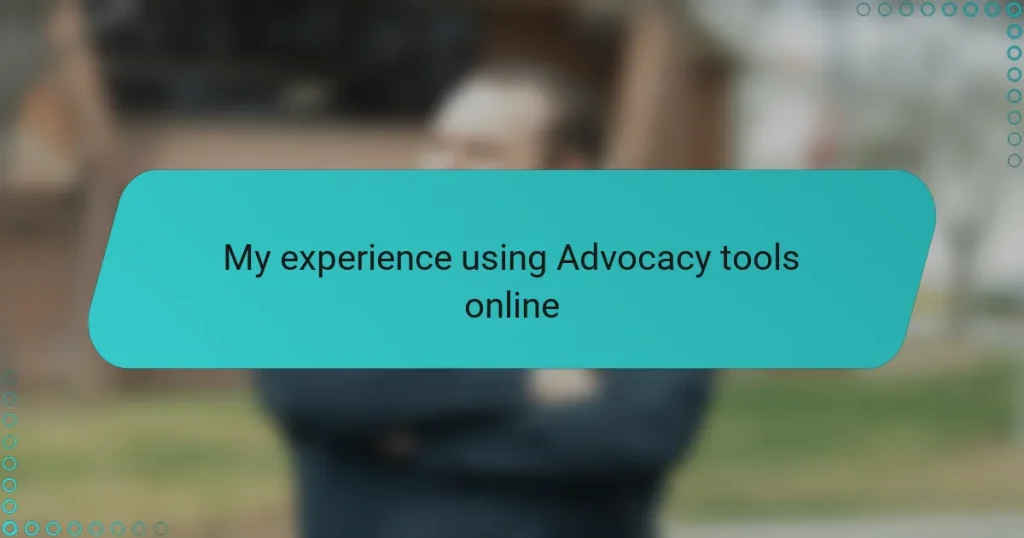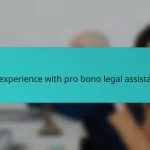Key takeaways
- Legal advocacy empowers individuals to give a voice to the unheard and requires empathy, patience, and courage.
- Choosing the right advocacy platform is crucial for effective engagement, balancing accessibility and features to suit the audience and cause.
- Measuring advocacy impact involves tracking both quantitative metrics and qualitative feedback, emphasizing the importance of personal stories in understanding true progress.
- Persistence, authentic communication, and self-care are essential components for sustaining effective advocacy efforts.
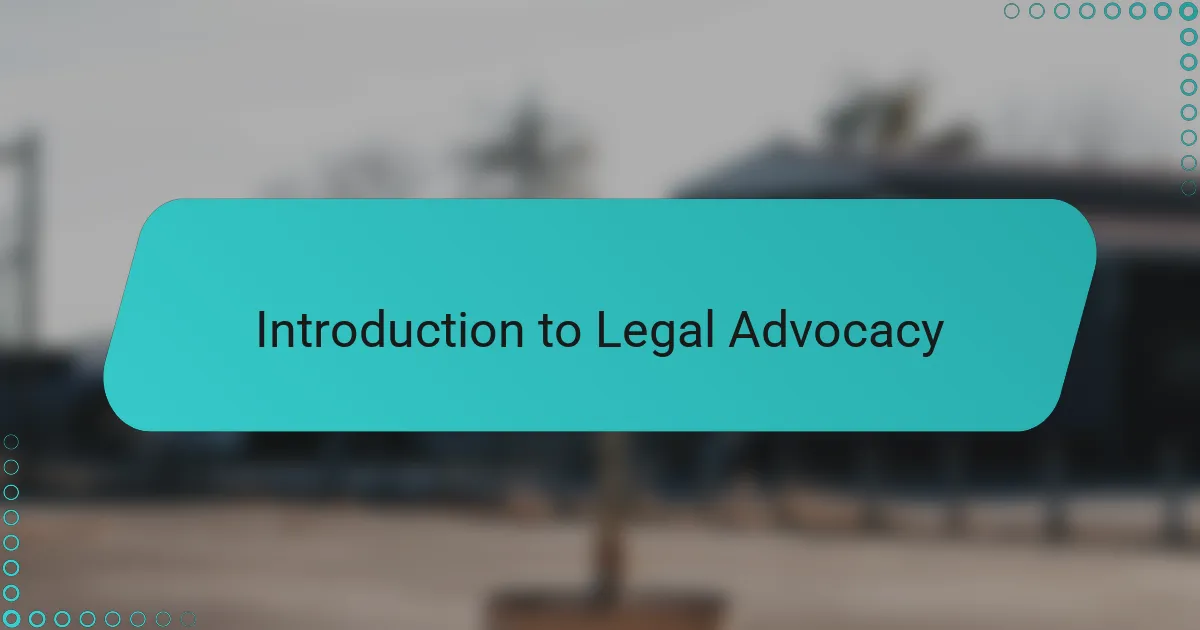
Introduction to Legal Advocacy
Legal advocacy, to me, is about more than just understanding laws; it’s about giving a voice to those who might otherwise go unheard. When I first encountered legal advocacy, I realized how powerful it can be in shaping outcomes that feel fair and just. Have you ever wondered how a simple argument or document can influence someone’s life direction? That’s the heart of legal advocacy.
From my experience, legal advocacy isn’t just for lawyers or experts; it’s something anyone passionate about fairness can engage in. It requires patience, knowledge, and the courage to stand up for what’s right, even when the path isn’t easy. I found this process both challenging and deeply rewarding, as it pushed me to grow and see the law from a more human perspective.
Ultimately, legal advocacy connects empathy with action. It’s a way of turning concern into concrete support, making real differences in people’s lives. The question I often ask myself is: How can I use the tools and skills I have to help others navigate their legal struggles? That curiosity has been the foundation of my ongoing journey in advocacy.
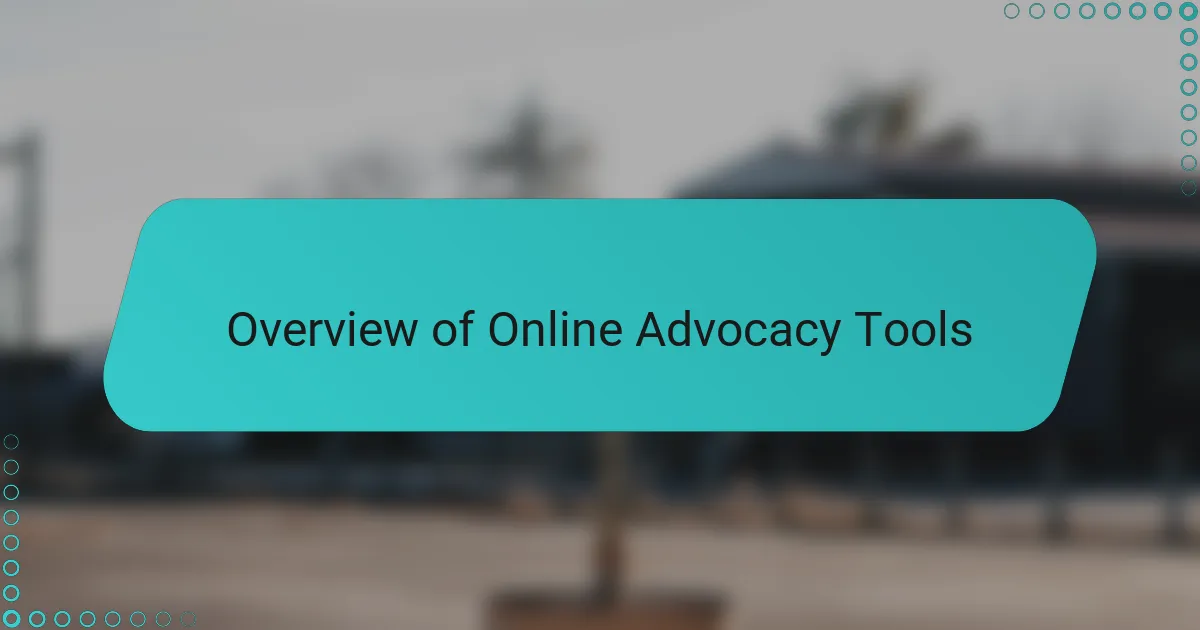
Overview of Online Advocacy Tools
Online advocacy tools have transformed the way I engage with legal causes. When I first started using platforms like petition sites and social media campaigns, I was amazed at how quickly awareness could spread. Have you noticed how a well-crafted post or an online petition can rally support in ways that traditional methods sometimes can’t?
What surprised me the most is how accessible these tools are. You don’t need a big budget or legal training to start making an impact. From video calls to virtual town halls, these technologies level the playing field and allow anyone passionate about justice to have their voice heard, even from a distance.
That said, I’ve also learned that using online tools effectively requires strategic thinking. How do you capture attention in a sea of information? Finding the right messaging and timing is crucial, and that challenge keeps me engaged every time I launch a new campaign.
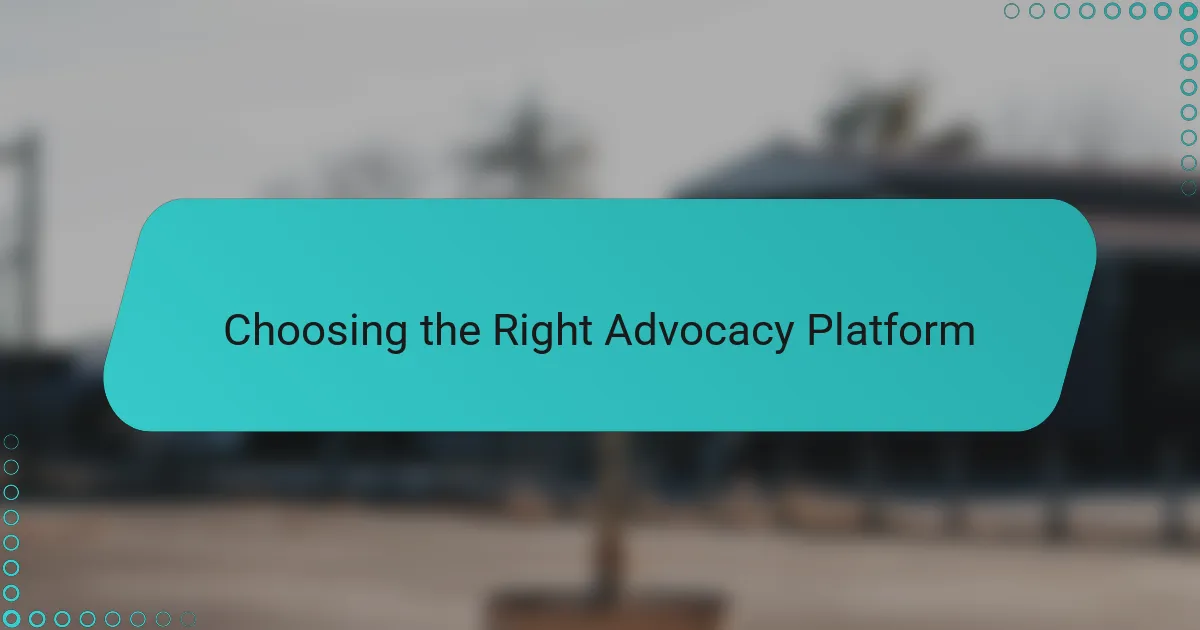
Choosing the Right Advocacy Platform
Choosing the right advocacy platform felt like picking the perfect tool for a delicate job. Early on, I tried platforms that promised wide reach but ended up feeling too impersonal, which left me wondering: Was I really connecting with the people I wanted to help? It taught me that beyond popularity, the platform had to suit the specific audience and cause.
I discovered that some platforms excelled in community building, fostering meaningful conversations, while others were better for quick mobilization. For instance, when I used a forum-based platform, the depth of dialogue encouraged stronger, trust-based advocacy, even if the audience was smaller. Have you ever noticed how the tone and functionality of a tool affect your ability to engage effectively?
Choosing a platform also meant balancing simplicity with features. A straightforward interface helped me focus on the message instead of struggling with technical glitches. Reflecting on that, I realized that the best advocacy tools are those that empower me to channel my passion without adding extra hurdles. What kind of experience do you prefer when advocating online?
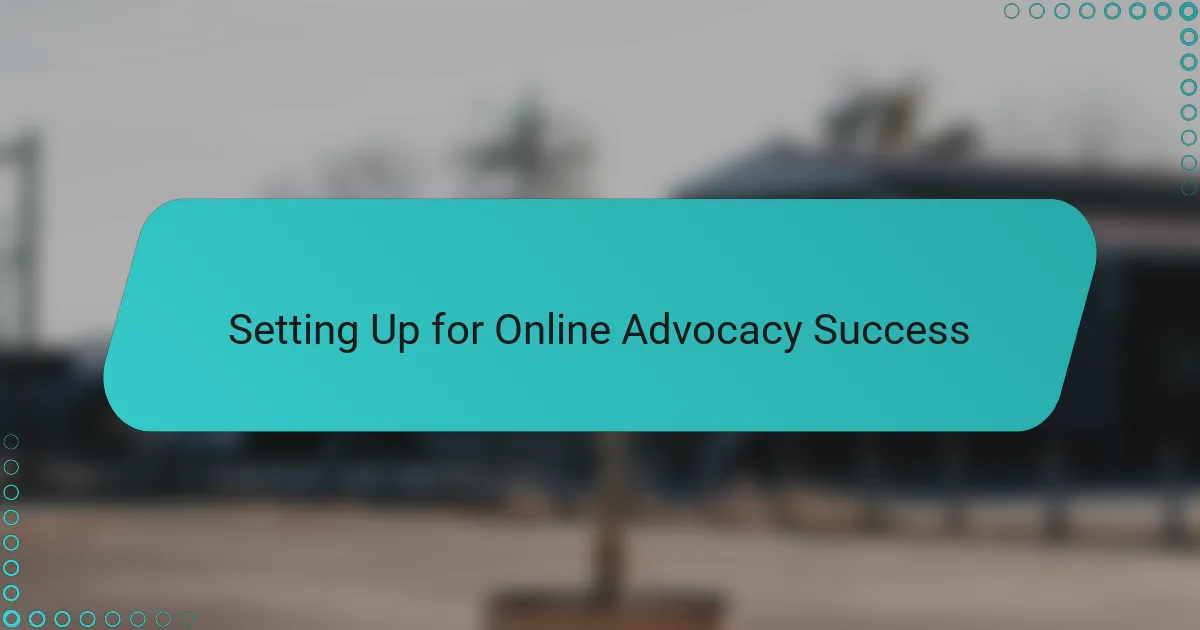
Setting Up for Online Advocacy Success
Setting up for online advocacy success starts with creating a focused plan. I remember jumping in excitedly without a clear strategy, only to feel overwhelmed by the flood of information and responses. Have you ever felt like your message got lost in the noise? Defining clear goals and knowing exactly what you want to achieve helped me stay grounded and purposeful.
Next, I found that organizing my resources made all the difference. Whether it was gathering credible facts, drafting concise messages, or preparing visuals, having everything ready before launching gave me confidence. When everything is laid out neatly, advocacy doesn’t feel chaotic—it feels achievable. Doesn’t it make sense that preparation builds strength?
Finally, I learned to anticipate engagement by considering the audience’s needs and habits. Early on, I overlooked timing and platform preferences, which meant fewer people saw or responded to my efforts. Now, I ask myself: When and where is my audience most receptive? Tailoring outreach to their rhythms has been a game changer in turning clicks into meaningful connections.
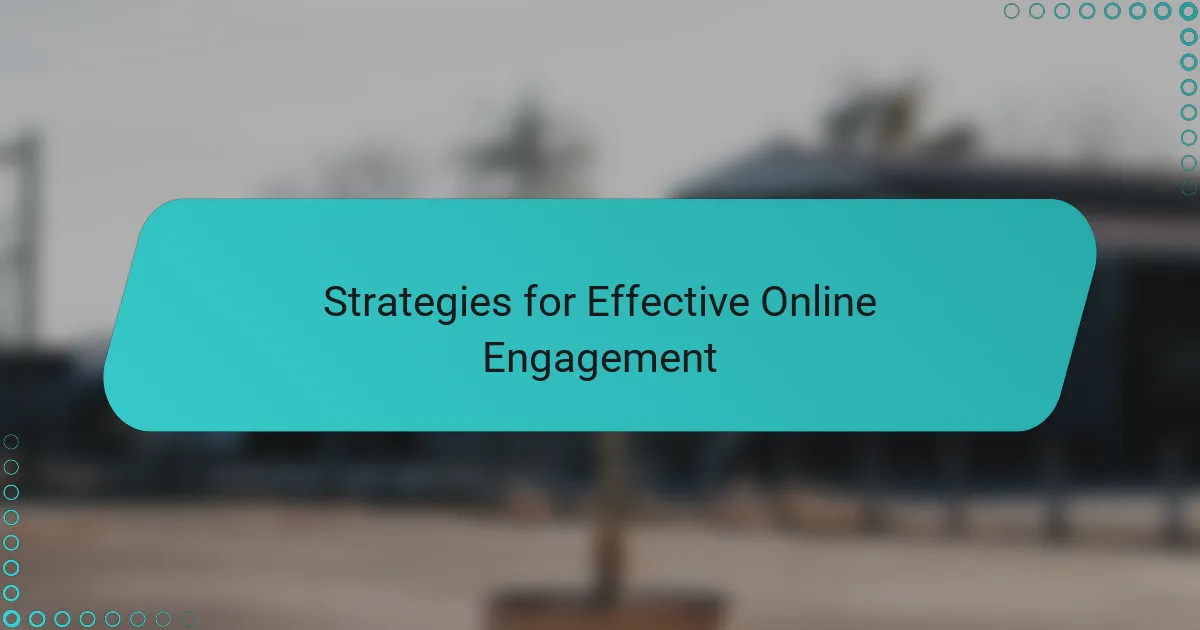
Strategies for Effective Online Engagement
Engaging effectively online often boils down to knowing your audience deeply. I once launched a campaign that barely got any traction simply because I posted at a time when my supporters were offline. Have you ever considered how timing can make or break your message? Adjusting my posting schedule to when people were most active transformed my engagement overnight.
Another strategy that’s worked wonders for me is fostering genuine conversations rather than broadcasting information. Instead of just sharing facts, I tried asking open-ended questions and responding personally to comments. This approach made supporters feel seen and valued, turning passive followers into active advocates. Don’t you think that building relationships online requires a human touch despite the screen?
Lastly, clarity is key. Early on, I’d cram too much into one post, hoping to cover all bases. It backfired—people skimmed and missed the point. Now, I focus on one clear call to action per message, making it easier for others to rally behind the cause. How often do we underestimate the power of simplicity? In my experience, less truly is more when it comes to sparking real engagement.
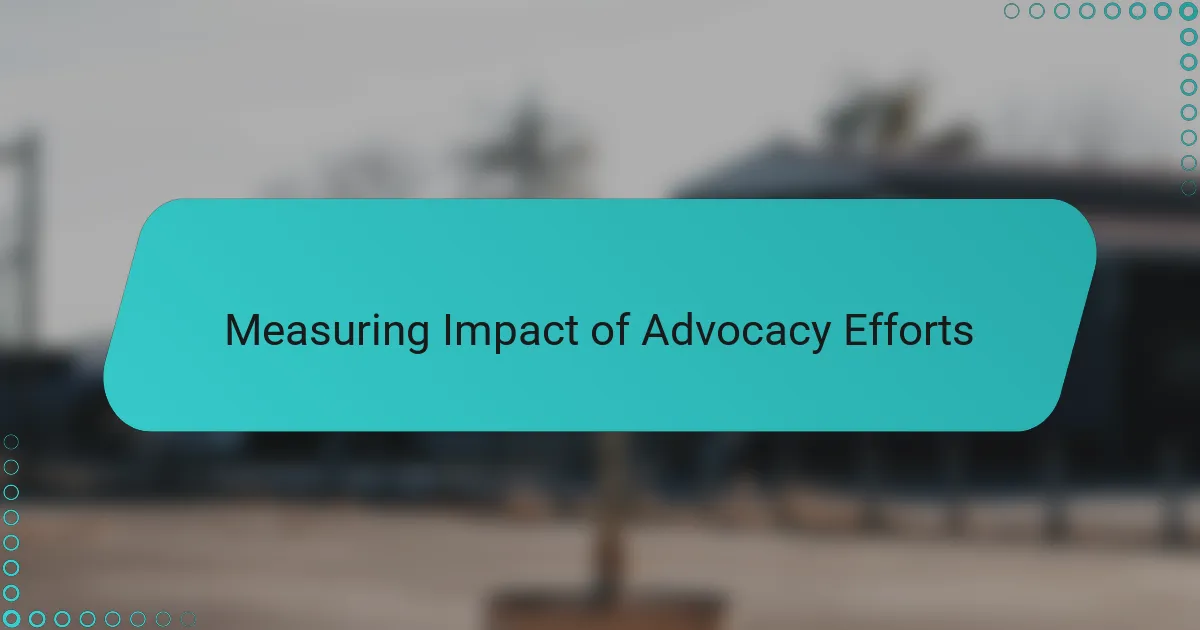
Measuring Impact of Advocacy Efforts
Measuring the impact of advocacy efforts has been both a revealing and humbling part of my journey. I used to think that a high number of shares or signatures automatically meant success, but I quickly learned that real impact goes beyond the surface. Have you ever felt unsure whether your hard work actually made a difference? Tracking concrete changes—like policy shifts or new alliances—became my true measure of progress.
I also discovered that qualitative feedback holds immense value. Reading personal stories from those affected, or hearing thank-you messages from community members, gave me a sense of purpose that metrics alone couldn’t capture. It’s one thing to see numbers grow, but it’s another to witness lives changed because of your advocacy. Isn’t that what really motivates us to keep going?
Of course, measuring impact isn’t always straightforward. Sometimes the effects unfold slowly or in unexpected ways, teaching me patience and resilience. By combining data analysis with heartfelt testimonials, I found a balanced view that keeps me grounded and hopeful. Have you tried blending numbers with narratives to truly understand your advocacy’s reach? It’s a practice I highly recommend.
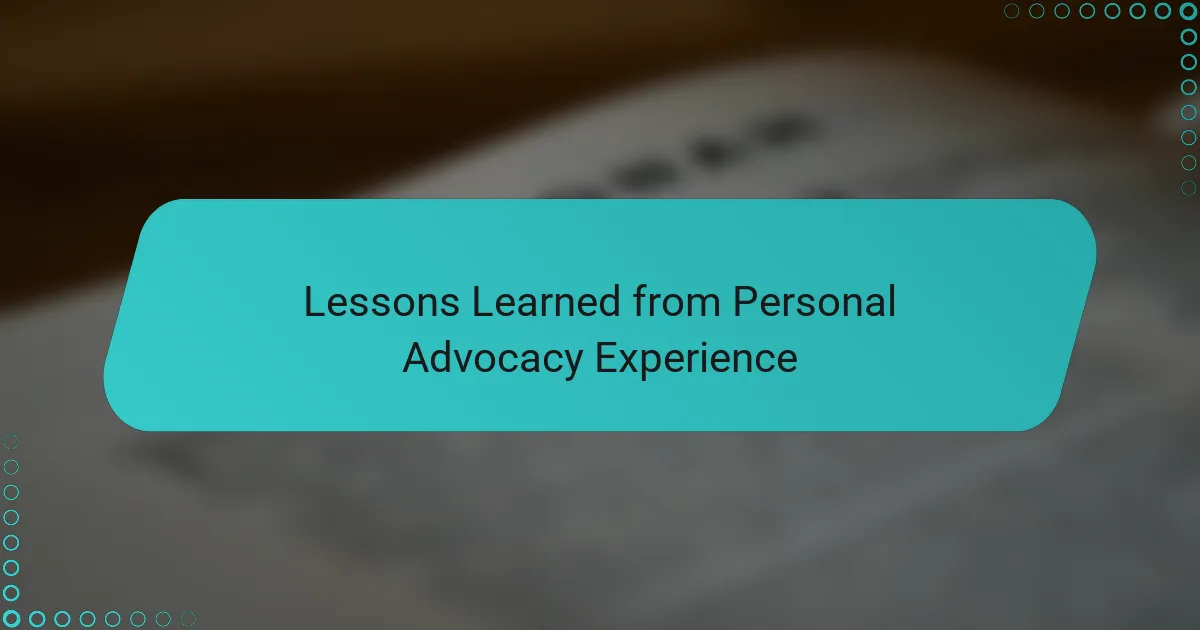
Lessons Learned from Personal Advocacy Experience
One lesson that stands out from my personal advocacy experience is the importance of persistence. There were moments when progress felt frustratingly slow, and I questioned whether my efforts were worth it. Have you ever felt that way? I realized that real change often demands patience and continuous commitment, even when immediate results aren’t visible.
Another insight came from recognizing the power of clear, authentic communication. Early on, I sometimes tried to sound too formal or legalistic, which didn’t connect well with my audience. When I shifted to a more straightforward and sincere tone, the response was noticeably warmer and more engaged. It made me think—how often do we underestimate the impact of simply being ourselves when advocating?
Lastly, I learned that self-care is crucial in advocacy work. I found myself emotionally drained after intense campaigns, and it hit me that sustaining advocacy requires balancing passion with personal well-being. How can we help others effectively if we’re running on empty? This lesson transformed how I approach each project, reminding me that caring for myself is part of caring for the cause.
